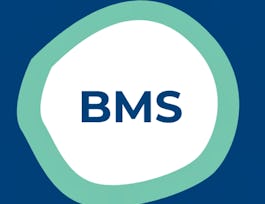Business and environmental sustainability are not natural bedfellows. Business is about making money. Sustainability is about protecting the planet. Business is measured in months and quarters. Sustainability often requires significant short term costs to secure a sometimes uncertain long-term benefit. To some activists, all executives are exploitative, selfish one percenters. To some executives, all activists are irresponsible, unyielding extremists.


Strategy and Sustainability
Taught in English
Some content may not be translated
34,134 already enrolled
(489 reviews)
Details to know

Add to your LinkedIn profile
6 quizzes
See how employees at top companies are mastering in-demand skills


Earn a career certificate
Add this credential to your LinkedIn profile, resume, or CV
Share it on social media and in your performance review

There are 6 modules in this course
Welcome! Before starting today's video lectures, please have a look at the course syllabus below. In this first session, we'll explore six fundamental differences between how, in my view, CEOs and board members think about the impact of business on the environment and how environmental activists, lobbyists, journalists, and legislators think about the same ideas. The session also deals with the evolution of environmental concern over the last 60 years and how business has responded. Objectives: To understand the different mindset that business has with respect to other parts of civil society and develop an appreciation for the relatively rapid evolution that has occurred in the relationship between business and the environment in the last 60 years.
What's included
7 videos5 readings1 quiz3 discussion prompts
This session calls out the strategic issues in which environmental sustainability plays a key role, such as securing a license to operate, dealing with competition, and shaping consumer and societal perception. Learning Objectives: To dig into the different ways in which the issue of environmental sustainability becomes a subject for business strategy.
What's included
6 videos2 readings1 quiz2 discussion prompts
This session first introduces the idea of environmental sensibility which will be different for companies in different business sectors and in different parts of the world. It then develops six strategic approaches that businesses might follow according to the degree to which they choose to comply with or go beyond legislation. Learning Objectives: To understand the idea of environmental sensibility and to explore different levels of response. In addition, learners will be able to determine the right approach for specific firms in a specific sector and place.
What's included
6 videos3 readings1 quiz2 discussion prompts
Part of the issue in choosing a strategy to deal with environmental issues is to fully understand the broad spectrum of environmental interest groups. This session explores how the movement took off, distinguishing between four types of groups and examining how business might consider interacting with them (and vice versa). Learning Objectives: To explore the nature of four different types of environmental interest groups such that their motivations and behaviors can be better understood.
What's included
6 videos2 readings1 quiz2 discussion prompts
This session explores differences across business sectors including automotive, oil & gas, fast-moving consumer goods, mining, and IT/consumer electronics. We will also contrast the situation in the United States with Europe, China, India, and Africa. Learning Objectives: To underline the importance of adapting a specific firm’s strategy to its sector, its geographic scope and even the nature of its ownership and governance structure prior to developing a specific strategic response.
What's included
6 videos2 readings1 quiz2 discussion prompts
This session presents an integrated framework for working through the issues introduced in the other sessions in order to develop a strategy. This involves understanding the firm’s past and present, looking ahead with a 10–20-year time horizon; quantifying, to the degree possible, the cost and benefits of different options; and making sure that the entire organization – from the board of directors down to line management – understands the direction chosen. Learning Objectives: To go through the critical steps required to build a robust strategy for dealing with environmental sustainability in a specific company or institution.
What's included
6 videos2 readings1 quiz1 peer review2 discussion prompts
Instructor

Offered by
Recommended if you're interested in Business Strategy

Copenhagen Business School

Banco Interamericano de Desarrollo

University of Pennsylvania
Why people choose Coursera for their career




Learner reviews
Showing 3 of 489
489 reviews
- 5 stars
74.94%
- 4 stars
19.95%
- 3 stars
3.46%
- 2 stars
0.20%
- 1 star
1.42%
New to Business Strategy? Start here.

Open new doors with Coursera Plus
Unlimited access to 7,000+ world-class courses, hands-on projects, and job-ready certificate programs - all included in your subscription
Advance your career with an online degree
Earn a degree from world-class universities - 100% online
Join over 3,400 global companies that choose Coursera for Business
Upskill your employees to excel in the digital economy
Frequently asked questions
Access to lectures and assignments depends on your type of enrollment. If you take a course in audit mode, you will be able to see most course materials for free. To access graded assignments and to earn a Certificate, you will need to purchase the Certificate experience, during or after your audit. If you don't see the audit option:
The course may not offer an audit option. You can try a Free Trial instead, or apply for Financial Aid.
The course may offer 'Full Course, No Certificate' instead. This option lets you see all course materials, submit required assessments, and get a final grade. This also means that you will not be able to purchase a Certificate experience.
When you purchase a Certificate you get access to all course materials, including graded assignments. Upon completing the course, your electronic Certificate will be added to your Accomplishments page - from there, you can print your Certificate or add it to your LinkedIn profile. If you only want to read and view the course content, you can audit the course for free.
You will be eligible for a full refund until two weeks after your payment date, or (for courses that have just launched) until two weeks after the first session of the course begins, whichever is later. You cannot receive a refund once you’ve earned a Course Certificate, even if you complete the course within the two-week refund period. See our full refund policy.



